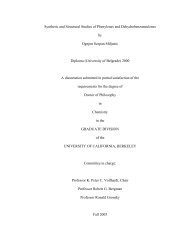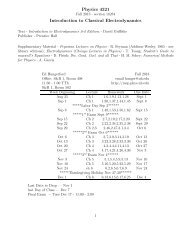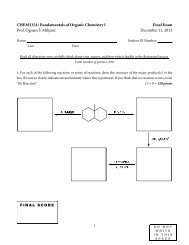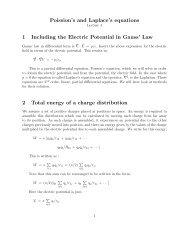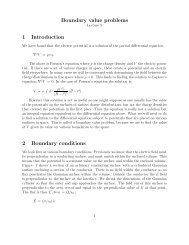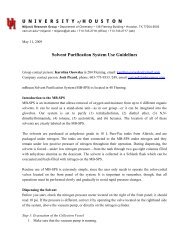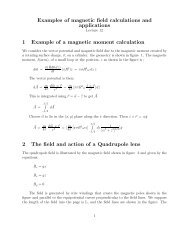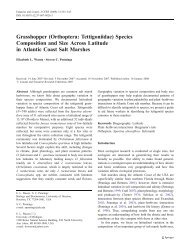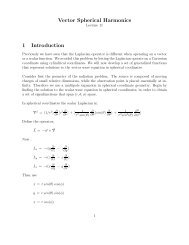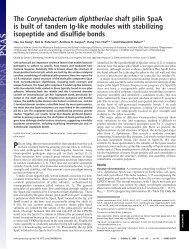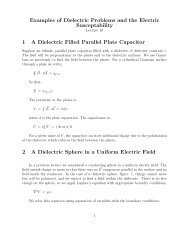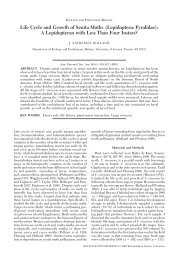Scattering 1 Classical scattering of a charged particle (Rutherford ...
Scattering 1 Classical scattering of a charged particle (Rutherford ...
Scattering 1 Classical scattering of a charged particle (Rutherford ...
You also want an ePaper? Increase the reach of your titles
YUMPU automatically turns print PDFs into web optimized ePapers that Google loves.
⃗B(k, ω) = i/c 2 ( ⃗ k × ⃗v)VTo get the fields at a distance perpendicular b to the <strong>particle</strong> path;⃗E(b, ω) =Integration gives1(2π) 3/2 ∫d 3 k ⃗ E(k, ω)e ikxbE z (ω) = − iωQ √2/π(1 − βV 2 2 )K 0 (λb)ǫE x (ω) = Q √2/π (λ/ǫ)v 2 K1 (λb)ǫwhere λ = (ω 2 /v)[1 −β 2 ], and K i are modified Bessel functions. The fileds have a spectrum<strong>of</strong> frequencies. We can calculate a Poynting vector;⃗S = (1/µ) ⃗ E × ⃗ BThis can be written in terms <strong>of</strong> the Fourier transforms <strong>of</strong> E and B as ;W/Area =∞∫−∞dω E(ω) B ∗ (ω)However the frequencies for E and B must be the same, ie time correlated. This is true forE 2 and B 3 which gives an electromagnetic pulse <strong>of</strong> photons in the S 1 direction. However,E 1 and B 3 are not. We arbitrarily add a magnetic field so that ⃗ B 3 → [B 3 + E 1 ]ˆx 3 . Thisgenerates a pulse S 2 . Note that this B field has no effect on the static problem and in anyevent the pulse S 1 dominates the impulse.There are then two photon flux terms;⎛ ⎞d 2 I 1(⎝ dω d area ⎠ Qd 2 =2 c (ωb/γv) 2 K 1 (ωb/γb)I 2 4π 3 ǫv 2 b 2 (ωb/γv) 2 K 0 (ωb/γb)dω d areaThen integrate over the impact parameters;dI∞∫dω = 2π bdbd 2 I 1dω d areab minIn the above the total value <strong>of</strong> the Power spectrum I 1 + I 2 is used. This results in;dIdω = Q2 c2π 2 ǫv [χ K 0(χ) K 1 (χ) − (β 2 /2)χ 2 [K1(χ) 2 − K0(χ)]]2)23




